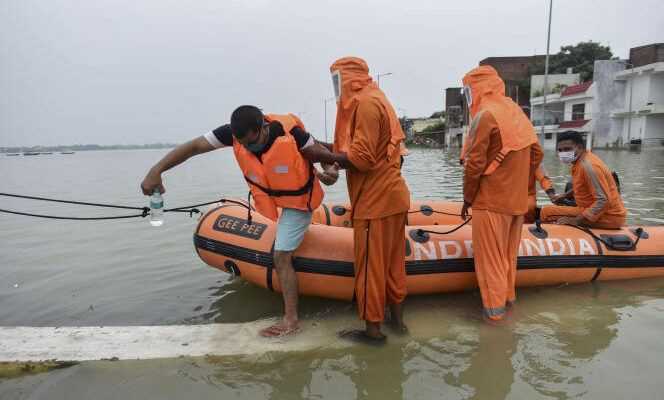Ranjeet Singh lives in Sel, a remote village in Uttarakhand in the Himalayas that lives in near autarky. The inhabitants, poor, cultivate their own vegetables, their corn, rice, lentils, the main part of their diet. The more fortunate have a buffalo, which provides them with milk, butter and cheese. But the vast majority already know that they won’t be eating a lot of rice and dahl this year. The monsoon, which normally spreads in these mountains from the end of June to the end of August, was totally erratic.
It rained a lot in the Himalayas in July, way too much. Uttarakhand and Himachal Pradesh were drowned in downpours. The completely soggy region suffered from landslides and landslides in series. Entire sections of mountains broke away in a few minutes, sweeping away roads, cars, buses, homes. August, on the contrary, is too dry, a calamity for the rice and lentil crops which are harvested in September. “It’s a very bad season for us, laments Ranjeet Singh. We only depend on the monsoon, we don’t have a water pump to irrigate our plots. There is going to be a shortage of food, because these are overpriced products that we cannot afford. “
All of northern India is affected by this unstable monsoon. In New Delhi, it was slow to carry its rains, imposing scorching temperatures on its 20 million inhabitants. It was 43.1 ° C in the Indian capital on the 1er July. When the monsoon finally arrived, in the middle of the month, sixteen days late, the megalopolis suffered very intense rainfall, twice as much as the average, causing congestion on poorly drained roads and building collapses. . After a dry start to August, the city has been drowned for the past three days, under a veritable deluge of water. The rainfall pattern has changed considerably in the capital in recent years.
Rampant urbanization
The disruption of the monsoon that the subcontinent is experiencing is one of the consequences of global warming. And the phenomenon will increase with the expected rise in temperatures. The sixth report of the Intergovernmental Panel on Climate Change (IPCC), published on August 9, predicts increasingly irregular and increasingly extreme episodes: fewer rainy days, but more intense precipitation and more destructive, with flash floods. A dramatic prospect for India where the monsoon is vital.
You have 59.56% of this article to read. The rest is for subscribers only.
